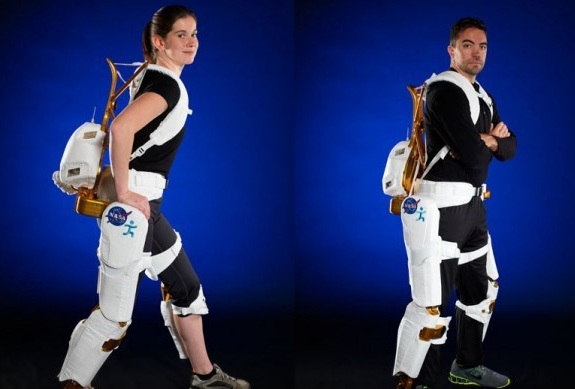NASA Developing X1 Exoskeleton To Keep Astronauts Fit In Space

NASA and the Florida Institute for Human and Machine Cognition (IHMC) with help from Oceaneering Space Systems of Houston have developed a robotic exoskeleton called X1, that can be worn by a person to either assist or inhibit movement in their legs.
The 57-pound device comes primarily to assist in the exercise of astronauts in space by offering resistance against the legs and aiding muscle stimulation, but could also be used in the reverse to amplify, assist or even produce movement for paraplegics here on Earth.
While still firmly being in the R&D phase, with a strong focus on development, evaluation and improvement of the technology, NASA is already looking into the potential the X1 could have to improve crew health both aboard a space station and during future long-duration missions. One of the biggest problems for astronauts health is atrophy (the partial or compelte wasting away of a part of the human  body, often due to a lack of nourishment or exercise), since the microgravity environment just doesn’t present enough resistance to the human body. The X1 would prove capable of offering the resistance needed for astronauts to maintain a good exercise routine. Another big plus for the device is that it would limit the increased weight and space consumption other exercise equipment would take up, and even produce a constant stream of real-time data that can be sent back to earth for doctors to monitor.
body, often due to a lack of nourishment or exercise), since the microgravity environment just doesn’t present enough resistance to the human body. The X1 would prove capable of offering the resistance needed for astronauts to maintain a good exercise routine. Another big plus for the device is that it would limit the increased weight and space consumption other exercise equipment would take up, and even produce a constant stream of real-time data that can be sent back to earth for doctors to monitor.
Back here on Earth, the IHMC are interested in developing the X1 for assisted movement, and have planned to expand the devices influence to rehabilitation and gait modification. It has the power to also relieve large amounts of weight from the user making it easier to re-learn how to walk, or overcome muscle damage. In theory, it could even be used to assist in offloading heavy weights from the wearer; with real-world applications like those in the military, or even in construction surely contemplated.
The device has been designed and developed in an extremely short time-frame, and was derived from the technology behind the Robonaut 2 and IHMC’s Mina exoskeleton. NASA's own work on exoskeletons complements work down by other agencies including DARPA.
Harvey McDaniel
Source: NASA

